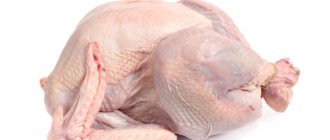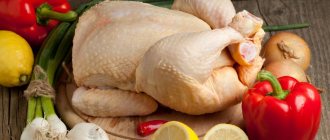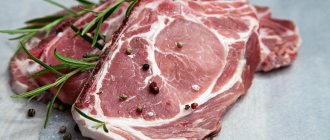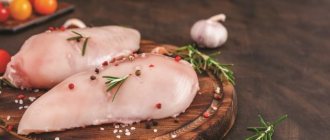Beef is very popular among most people. It is characterized by excellent taste, nutritional value, and has a beneficial effect on the body. A big advantage over many other types of meat is the low fat content of beef.
Beef is the meat of cattle: cows, bulls, heifers, calves or oxen. Sometimes the meat of young, immature animals, calves and heifers, is separated into a separate category - veal. The word "beef" comes from "beef", which in Old Russian means "cattle".
Man has been raising cattle and cooking beef for over 8,000 years, since the wild ox (bosprimigenius) was first domesticated. It is from him that all currently existing varieties of these animals, grown on an industrial scale or at home, come from. There is an opinion that it all started from the territories of modern Turkey and Macedonia.
Currently, there are more than 1,000 species of purebred and 30 hybrid breeds, which are distributed in all parts of the world.
And each of these breeds has its own characteristics, which depend on:
- climate;
- the environment, the nature in which animals live;
- the needs of people involved in their breeding.
Most commercial beef is obtained from the slaughter of castrated steers up to 20 months old, the rest is heifer carcasses.
The taste and quality of meat is directly affected by the fattening process. There are many methods, and opinions differ greatly: some believe that it is both economically profitable and effective for the taste of meat to fatten animals from a young age with special feed. Others argue that until slaughter, the animal can eat field grass in the pasture, and special feed is needed only immediately in the last few months before slaughter.
Various factors influence whether beef meat is firm or soft, dry or juicy, saturated fat or low in calories, for example:
- how long the meat has been matured;
- what kind of feed was fed to the livestock;
- what was the sex and age of the cow or bull;
- what is the breed of the animal;
- which part of the body is chosen for cooking.
It has also been proven that the quality of meat is also affected by whether the animal experienced stress before slaughter.
The best grades of beef are named after the breeds of cows from which they are produced. The world famous Hereford and Angus, for example, were bred in England. Recently, Argentinean beef has been considered the most delicious; Australian meat, bulls from New Zealand and the United States are no less valued.
Types of beef
Beef is usually divided into 3 grades: highest, first and second. The highest grade includes sirloin or thigh - meat from the rear part of the animal. This juicy, fiber-free meat is often used for roasts and rump steaks.
Other types of premium beef:
- The back
has a thick upper edge. This includes ribs, rib loin, entrecote, and thick end. Excellent for cutlets, roast beef, baking in the oven in one piece, and you can cook broth from the ribs. - The brisket
is flesh interspersed with small fat and film. Well suited for making broth or stewing, often making meatloaf. - Fillet
– thin edge and lumbar part. Tender and lean meat. They prepare steaks, roast beef, goulash, chops, and cutlets. - The rump
is the top of the hind thigh. Fry in the oven in large pieces over an open fire. Used for medallions, meatballs, chopped cutlets.
The first grade is the shoulder part, shoulder blade, flank. The shoulder part is used for clear broths and seasoning soups. Suitable for roasts and minced cutlets. The blade part is suitable for chopped cutlets, soups, goulash. Depending on the location, the meat may have varying degrees of softness. Flank is usually used for stewing with chopped and sliced vegetables, and making rolls.
The second grade includes shank and cut. The shank or knuckle is stewed or boiled with or without bones, and jellied meat is prepared. The cut is the neck part. Used for stewing, boiling, and preparing broths.
Marbled beef is distinguished separately. This is the highest grade of beef and is considered a delicacy. Dishes made from marbled beef are so juicy and tender that they literally melt in your mouth. This meat really looks like stone due to its bright color and many inclusions of fat in the fibers.
Such meat is obtained by intensively feeding the bull with grain for the last 4 months before slaughter and minimizing the movement of the animal. This way the meat turns out tender, fatty and has virtually no connective tissue in its composition.
What types of meat are the healthiest?
Red meats include beef, lamb, and pork; they are considered the best sources of iron and are recommended for people suffering from anemia. The least amount of cholesterol in these types of meat is found in young lamb, slightly more in beef and pork is more inferior. In any case, it is better to take the meat of a young animal, it is easier to digest and assimilate. It is better to cook meat without using oil.
To get the most benefit from eating meat, it is best to cook it in a steamer, bake or boil it. It is better to refrain from fried foods, as they increase cholesterol and increase toxicity due to carcinogens.
For better protein absorption, meat is best served with plenty of herbs and vegetables. This will also help remove excess cholesterol. In the cold season, greens can be replaced with brown rice or buckwheat; pasta made from coarse wheat varieties is also suitable.
Expert opinion
Maxim Ostrovnoy
Expert of the LiteDay project. Senior martial arts trainer. Specializes in general physical training, boxing, women's boxing, and strength training. He enjoys cycling. 32 years
Thus, it is difficult to say definitively which meat is the healthiest. In any case, you don’t need to eat a lot of meat; it’s important to cook it properly and choose quality meat when purchasing. I am against vegetarianism, especially if you go to the gym and work out for mass. In this case, the absence of meat in the diet will definitely have a negative impact on the body in the form of a lack of protein, vitamins, and minerals. If you have any doubts when creating a menu, you should contact a nutritionist. In any case, be sure to plan at least one meat day in your diet. Be healthy!
(Visited 114 times, 115 visits today)
Beef composition
The fact that beef is a valuable source of healthy protein is an indisputable fact. Beef protein is very easily absorbed by the body. Beef contains less fat than chicken, so it is especially valued by nutritionists and athletes and helps in gaining muscle mass.
100 grams of beef contains:
- fats - 4.99 g;
- proteins - 22.03 g;
- carbohydrates - 0.05 g;
- water - 72.30 g;
- ash - 1.05 g.
Vitamins:
- Vitamin A - 2.0 mcg;
- Vitamin D - 0.1 mcg;
- Vitamin D3 - 0.1 mcg;
- Vitamin E - 0.2 mg;
- Vitamin K - 1.4 mcg;
- Vitamin B1 - 0.1 mg;
- Vitamin B2 - 0.2 mg;
- Vitamin B3 - 5.6 mg;
- Vitamin B4 - 65.7 mg;
- Vitamin B5 - 0.6 mg;
- Vitamin B6 - 0.6 mg;
- Vitamin B9 - 5.0 mcg;
- Vitamin B12 - 2.3 mcg.
Microelements:
- calcium - 12.0 mg;
- iron - 2.1 mg;
- magnesium - 19.0 mg;
- phosphorus - 205.0 mg;
- potassium - 330.0 mg;
- sodium - 63.0 mg;
- zinc - 5.1 mg;
- copper - 0.1 mg;
- selenium - 25.4 mcg.
Beef is a good source of elastin and collagen, which are the main builders of joint tissue. Therefore, to prevent joint diseases, it is worth eating beef.
Chicken
Chicken is a valuable source of protein. Breast meat is an integral part of the athletes’ diet.
Composition of vitamins and microelements in 100 g of chicken:
| Vitamins | mg per 100 g | Minerals | mg per 100 g |
| 0,07 | Potassium | 194 | |
| 0,07 | Sulfur | 186 | |
| 0,15 | Phosphorus | 165 | |
| 12,5 | Chlorine | 77 | |
| 0,8 | Sodium | 70 | |
| 0,5 | Magnesium | 18 | |
| 0,004 | Calcium | 16 | |
| 1,8 | Zinc | 2 | |
| 0,5 | Iron | 1,6 |
In the East, chicken delicacies are valued as products that delay aging. Due to its low fat level, chicken is easily digested and is recommended for inclusion in the diet of children, the elderly and those losing weight.
Vitamins in chicken meat, B3 and B6, strengthen nerves and support heart function. Poultry fillet is as rich in phosphorus as seafood. Chicken dishes are low in carbohydrates, with the exception of the skin. Chicken meat contains a lot of iron, magnesium and protein.
Possible harm:
- chicken may contain salmonella , so careful heat treatment is required;
- histamines in chicken often cause allergies;
- antibiotics are used when raising chickens , so poultry is more useful;
- Fried and smoked chicken has high cholesterol .
Benefits of beef
Due to the content of a large number of useful elements in its composition, beef has many positive properties that have a beneficial effect on the human body. Meat is especially useful for a growing body, for people leading an active lifestyle, athletes, as well as those who have suffered injuries, burns and serious illnesses.
Beef is useful in the treatment of urolithiasis, helps to recover from infectious diseases, injuries and burns. The collagen contained in beef helps restore healthy joints.
The benefits of beef, when consumed on a regular basis, are as follows:
- strengthens the immune system and increases the body's protective properties;
- helps speed up metabolism;
- improves vision;
- normalizes the functioning of blood vessels;
- gradually reduces the level of “bad” cholesterol;
- prevents the appearance of atherosclerosis;
- increases blood clotting;
- normalizes stomach acidity;
- cleanses the body of toxins and waste;
- helps in the fight against insomnia.
Beef meat helps the male body well in the synthesis of testosterone (male hormone) and increases potency. It also increases physical endurance, mental activity, and also prevents early baldness by strengthening the hair follicles.
Beef is also beneficial for women:
- relieves chronic fatigue;
- supports the endocrine system;
- helps in restoring the body after heavy menstrual bleeding;
- regulates the functioning of the reproductive organs;
- gives strength to nails and hair.
Beef is especially beneficial for pregnant women, as it provides essential vitamins and minerals not only to the mother, but also to the child.
Turkey
Vitamins and minerals included in turkey:
| Vitamins | mg per 100 g | Minerals | mg per 100 g |
| A | 0,01 | Sodium | 90 |
| IN 1 | 0,13 | Potassium | 210 |
| AT 2 | 0,22 | Phosphorus | 200 |
| AT 3 | 7,8 | Magnesium | 21 |
| AT 4 | 139 | Calcium | 12 |
| AT 5 | 0,6 | Iron | 1,44 |
| AT 6 | 0,3 | Zinc | 2,45 |
| E | 0,3 | Copper | 0,08 |
Beneficial features:
- Gives a large influx of energy during physical activity.
- It is easily digestible , therefore it is indicated as a dietary supplement for young children.
- Tryptophan, which is part of turkey, promotes the production of serotonin - the “hormone of joy”.
- Indicated for severe illnesses and during the recovery period as a dietary product .
Beef harm
Despite many beneficial properties, beef can sometimes cause harm to the body. For example, scientists around the world believe that beef meat, more than any other meat, contributes to the development of colon cancer when consumed regularly or excessively.
What the animal was fed also matters:
- Nowadays, most pets are fed special food.
- Animals may not see clean meadows and fields in their entire lives.
- Harmful elements contained in animal feed naturally enter our body along with meat and can negatively affect it.
Harmful effects may also be due to the method of preparing meat. It is believed that fried beef, due to the resulting carcinogens, does more harm than good, although it is tasty. Purine bases in beef may contribute to the development of gout.
Use of beef in cooking
Beef occupies a major place in cooking; it is used in dishes of many nations. Beef meat can be used to prepare first and second courses, salads, appetizers, it can be fried, boiled, baked, stewed, marinated - the possibilities are endless. Ground beef is used to prepare individual dishes or use it as a filling for pies and dumplings.
Pairs perfectly with any food, vegetables, sauces, spices and seasonings. The most popular beef dishes include beef stroganoff, steaks of various roasts and raw beef tartare.
Each part of the animal’s body has its own application, which over many years of practice has shown its effectiveness in preparation:
- Cutlets and meatballs are best obtained from the neck and thigh.
- Ribs are more suitable for soups and broths.
- The most tender meat is sliced.
- The tail usually goes for jellied meat.
- Bones are also used - they are usually used to make broths for soup.
In addition to meat, the innards of cattle, the so-called liver, are also used for food: heart, lungs, kidneys, liver, tongue. Some peoples even use eyeballs and animal bone marrow.
Features of meat processing
Before use, the product must be heat treated. This allows you to destroy parasite eggs and the bulk of pathogenic microorganisms, preventing infection by helminths, salmonella, E. coli, listeria, campylobacter, hepatitis E virus, etc.
Raw and semi-raw meat is less digestible and can cause gastrointestinal upset.
Are vitamins stored?
During the cooking process, some of the vitamins and other beneficial substances are destroyed. Baking reduces the loss of valuable nutrients. During cooking, many of them go into the broth, so there is no need to drain it.
Roasting allows you to preserve more proteins and vitamins. When cooking in a frying pan, the meat slices are covered with a crust, which prevents the loss of nutritional components. Such food is healthy only if a minimum amount of fat is used for frying.
https://youtu.be/oyoCimpxZZc
How to choose beef
To choose good beef, first of all, you need to pay attention to the storage conditions of the meat and sanitary standards: the butcher must wear gloves, and the meat should not lie on dirty cardboard boxes. The storage area must be clean.
The following factors are relevant:
- Aroma.
Meat with a pleasant milky smell is truly fresh. If the aroma is even a little unpleasant, you can safely pass by. - Color.
Depends on the age of the animal, fattening and breed. If bloody streaks and bruises are visible on the meat, then it is better not to buy it, since they are formed from improper slaughter or illness of the animal. - Darkened and weathered meat.
It is also not recommended to take it.
You need to press on the fiber of the meat: if the dent from your finger quickly smoothes out, then the meat is good. Watery and soft fiber indicates repeated freezing and thawing. A large amount of dense, thick and yellow fat, more like lard, indicates the advanced age of the animal. The fat of a young individual is usually white, with a creamy tint and as if airy.
Cholesterol content in different types of meat
Meat products have long been considered the most valuable source of nutrients necessary for human life. First of all, this product is a storehouse of animal protein, which plays the role of building material for all cellular structures. Cholesterol is also present in meat, but its amount primarily depends on the type of product, as well as on how the animal was kept and what it was fed throughout its life. From the point of view of organic chemistry, meat consists of the following components:
- water component from 45 to 50%;
- protein fraction from 16 to 21%;
- fats up to 45%;
- mineral component from 0.5 to 1.4%;
- B vitamins and others, enzymatic substances - depending on the variety
You should also pay attention to the fact that the chemical properties of meat by-products will be somewhat different from muscle fibers. Meat from animals that lived in the wild has different chemical characteristics than those that were raised in households or farms.
Pork
There is an opinion that pork is considered the most harmful type of meat product due to its high cholesterol content. Is it so? In fact, the amount of this substance depends on the age characteristics of the pig, its weight, and the thickness of the fat layer. 100 grams of young pig contains no more than 40 mg of cholesterol. Adult pork tenderloin contains about 75 mg of cholesterol per 100 grams.
Diet experts do not recommend eating pork for patients with digestive tract problems and people suffering from liver disease.
The situation with pork by-products is somewhat different.
- The brain of pigs is richest in cholesterol , containing about 2 g of harmful substances per 100 grams of product.
- The liver and kidneys contain 135 mg and 285 mg of cholesterol, respectively.
- Pork tongue can be compared to piglet meat in terms of cholesterol content.
Beef
Beef meat has long been considered a dietary product. It is recommended for use by sick and weakened people, nursing mothers, and young children. The muscle pulp of calves has a pleasant taste, soft texture, rich nutritional qualities, and is easily absorbed by the body. As for the meat of adult cows, it has a rough fibrous texture, which somewhat impairs its digestibility. 100 grams of beef (flesh) contains about 76 mg of cholesterol. This is an average value, since the content of this substance depends on the age of the animal, as well as on the part of the body from which the meat product was obtained.
Beef by-products are not only a storehouse of nutrients, but also cholesterol. Beef tongue contains about 90 mg of cholesterol per 100 g. As for the liver , per 100 g of this product there are more than 350 mg of harmful substances.
The method of heat treatment of products also affects the fat content. So frying can increase this indicator, and boiling , steaming or cooking in the oven slightly reduces it.
Mutton
Sheep and ram meat is famous for its unusual taste, which not every consumer likes. Meat contains a certain amount of cholesterol (97 mg per 100 UAH of product). In addition, the product contains a substance – lecithin, which helps reduce the concentration of serum cholesterol. Therefore, for people suffering from lipid metabolism disorders, the choice of lamb is very acceptable.
Lamb tail contains a large amount of fatty polyhydric alcohol, but the benefits and harms from it do not overlap each other. tail contains Omega 3 fatty acids, which are essential for the reproductive health of female and male bodies. The high content of vitamins allows you to maintain the normal functioning of internal organs, helps improve the condition of the skin and their derivatives (nails, hair).
The harm of lamb tail fat lies in its high calorie content and cholesterol content. Its systematic use leads to a rapid gain of extra pounds and the formation of fatty plaques on the walls of blood vessels. People suffering from diseases of the digestive tract (cholecystitis, pancreatitis, hepatitis) should also avoid this product.
horsemeat
For Slavic peoples, horse meat is a delicacy. But for Asian cuisine this is a completely familiar product. Horse meat contains a small amount of fat. There are only 65 mg of cholesterol per 100 g of horse meat. Therefore, the answer to the question: “Can I eat horse meat if I have high cholesterol?” positive. Due to the content of many easily digestible proteins in horse products, its nutritional qualities are much superior to beef and pork.
Rabbit meat
Rabbit meat has the most delicate texture and pronounced nutritional properties. This particular variety is considered ideal for a diet aimed at losing extra pounds. The cholesterol content in rabbit meat is very small - 40 mg per 100 g of product. Rabbit meat, when eaten, is digestible by more than 80%, so it is recommended for use by all categories of the population, including the elderly and young children.
Chicken
Chicken is a leader in low cholesterol content . The white meat (chicken breast) of these birds contains 32 mg of the substance per 100 g, and the meat of the lower and upper extremities contains about 88 mg per 100 g. In addition to cholesterol, chicken contains a lot of protein and essential amino acids, which are necessary for the coordinated functioning of all organ systems.
Chicken liver contains cholesterol in significant quantities - 40 mg per 100 g of product, and how much of this substance is contained in chicken stomachs ? There are 212 mg of cholesterol per 100 g of chicken stomachs, which is almost half as much as in chicken liver. This suggests that individuals suffering from hyperlipidemia should consume chicken by-products very carefully.
How long to cook beef
To determine how long to cook beef, you need to know which part of the animal will be cooked, since improper cooking can easily ruin the future dish.
For example:
- It is recommended to boil the brisket or thigh for at least 2.5 - 3 hours;
- sacrum and shoulder blades - approximately 2 hours;
- Cook frozen beef for 1.5 to 2 hours.
Cooking time also depends on the age of the animal and the size of the piece of meat. It is recommended to cook beef in pieces no larger than 2 kg so that the meat is as tender and juicy as possible.
Boneless meat, cut into small pieces, can be boiled in a double boiler or microwave. In this case, cooking will take from 25 to 40 minutes. Determining the readiness of boiled beef is simple: just pierce it with a fork 1-3 cm, and if the device goes in easily, then the meat is cooked, and if blood flows out of the hole from the fork, then you will need to cook more .
Beef calories
100 g of raw beef accounts for 133 kcal
and 72 mg of water, while after heat treatment the calorie content and nutritional value change.
For example, the calorie content of 100 g of boiled beef is 153 Kcal
, as well as 4.47 g fat and 22.09 protein
100 g of fried beef – 200 Kcal
, 5.31 g fat and 20.5 g protein
Stewed beef contains 178 kcal
, 7.38 g fat and 19.02 g protein.
Beef is a healthy and nutritious product, the positive properties of which cannot be disputed. However, if you abuse meat, some negative properties may appear, and sometimes it can even become hazardous to health. Therefore, you should not abuse it and it is advisable to try to choose the right high-quality and fresh product.









